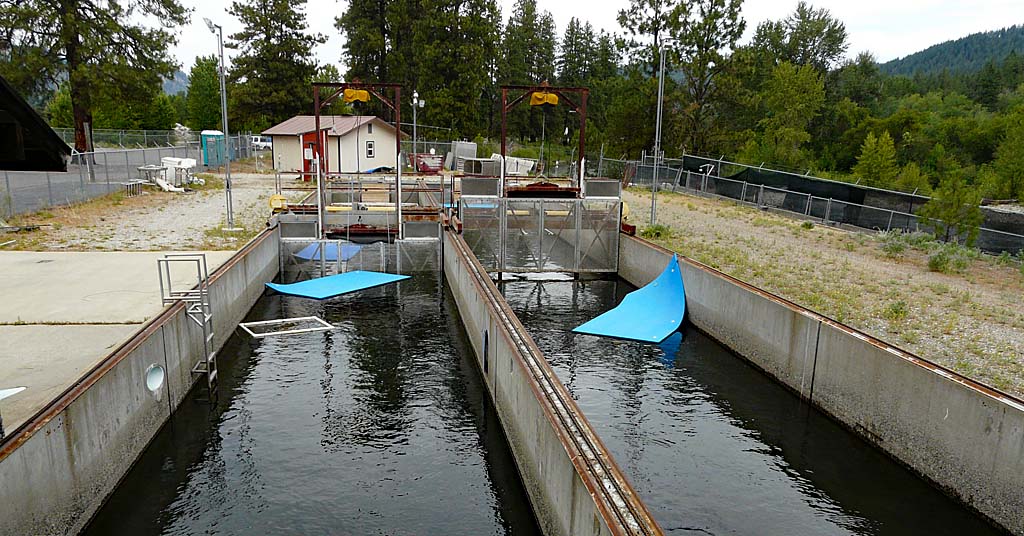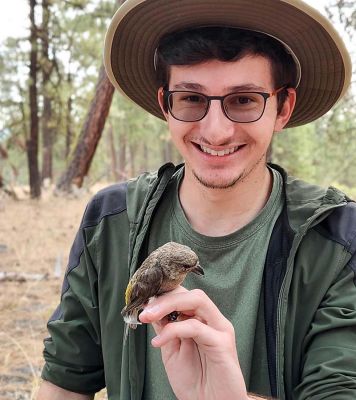Idaho Power balances ecology and economy as survey finalizes
Published 12:30 pm Saturday, June 24, 2023

- Ancient pictographs have been found throughout the Snake River, the area supporting the Nez Perce for hundreds of generations, who were particularly affected by the mercury in its native fish.
BAKER CITY — The Hells Canyon dam complex’s upcoming environmental impact survey and subsequent federal relicensing has had Idaho Power in high gear to meet the ecological and recreational needs of the river.
Idaho Power has been in the process of relicensing for nearly 20 years as they approach their goals. Baker City Herald recently covered the water quality work in the Brownlee interior in a previous article.
Trending
At the crux of the ecological work, the Oxbow fish hatchery, is being reconstructed in the waning of the salmon season. Just upstream, the Oxbow dam itself lies before the namesake river’s bend.
When they were completed in the 1960s and 70s, the dams weren’t built with incorporated fish ladders. This effectively turned a continuous river ecosystem into a segmented one, creating isolating pockets especially for deep-dwelling fish.
The fish can safely flow downstream, and sometimes are intentionally flushed down, but the life cycle of the chinook salmon ultimately returns following a long swim upstream to spawn. Salmon’s instincts fortunately cause them to be self-gathering, capitalizing on that a large hopper below the Hells Canyon dam steadily accumulates the fish to be craned out and hauled to the hatchery.
“We hold adults to spawn them,” said Idaho Power’s environment affairs director Brett Dumas. “Once eggs are a certain size they’re raised elsewhere.”
The salmon, already at the end of their lifecycle, are culled in the hatchery process as females release their egg roe and males their sperm, after which the animals would have died naturally.
“The salmon are divided between Oregon, Idaho and the Nez Perce tribe,” Dumas said.
Trending
The Nez Perce have occupied the area for thousands of years, with oral histories and pictographs reaching back to when Mount Mazama erupted and became Crater Lake. When the dams went in, the bioaccumulation affected them significantly more than was understood early on.
The Nez Perce, or Nimiipuu, have treaty-assured rights to hunt and fish on the river, but with modern respect to the mercury content they’ve mandated a reduced consumption of natural fish, reaching a settlement with the state in 2021 to minimize fish toxicity. This includes sturgeon, which thrive in the Snake River.
“Bass and crappie, well, they don’t live that long. The sturgeon downstream? Wellm they can live 100 years, so that can build up a lot (of mercury),” Dumas said.
While mercury standards are based on an average consumer, for the Nez Perce it’s been a damage to their traditions, let alone their predominant food sources. They’ve relied heavily on fish for almost all of their local history.
“This was one of our challenges between Idaho and Oregon, how we’re going to resolve all this,” Dumas said.
While it wasn’t ideal to interrupt these ecosystems with man-made structures, Dumas said the fish trap and hatchery they operate has been comparably effective to fish ladders in keeping salmon populations sustainable, with enough overhead to allow salmon’s recreational fishing.
While recreation is tertiary to the water and fish quality, for Idaho Power maintaining the natural state is a constant concern, and the success of wildlife hinges on balance with the camping, hunting, trekking and fishing interests surrounding Hells Canyon.
Walls 8,000 feet tall make Hells Canyon the deepest in North America, a biome host to abundant and verdant life; goats and elk, cougars and bears, eagles and salmon. Not to mention thousands of regular visitors virtually all year round, often with family, boats and trailers in haul.
”There’s an obligation of comfort at the reservoir, it is a huge recreational spot, and then we have the parks, we have boat ramps, we have picnic tables, all of those things are going to be maintained and/or upgraded in the new license,” Dumas said.
From Woodhead, to Copperfield, to Hells Canyon campground, the parks will be receiving some due revamps in the coming year. Hells Canyon park, being particularly sloped, will have more terracing, and throughout Idaho Power is making WiFi more accessible, in part a safety measure for those without service in the notoriously low signal riverside.
River security remains consistent, with roadside and watercraft patrol there to assure safe conduct of its many visitors and denizens. The river has had several fatalities along its banks over the last year alone, and emergency response extends well beyond campsite comforts.
Jetboat pilot Steve Zanelli is an experienced Idaho Power river navigator when roads end and whitewater begins, and he hosts many important operations from the Hells Canyon Creek docks, including search and rescue as well as fire missions. With radar assurance, he can ride out even the White Sheep rapids, a Category 5 feature north of the Hells Canyon dam.
”Because you’re transporting the public you have to have a U.S. Coast Guard master’s license,” Zanelli said. “Technically I can pilot or be a master of any vessel up to 200 gross tons.”
Zanelli has an extensive knowledge of the river’s features, including the sites of ancient pictographs, and besides the odd tour, rescue or fire escort, Zanelli supplies integral transport for inspections and environmental survey crews, with access to areas typically cordoned off for public safety.
The businesses working the river include several whitewater rafting, fishing and hunting guides. Along the trip, the media tour luckily had a chance to witness a successful sturgeon catch in action.
“They don’t even take them out of the water,” Dumas pointed out. Instead, the catch/release sport has fishermen roll the giant fish to their bellies to be measured, and released immediately after.
The income from these operations is a major boon to a wide radius of businesses local to Oxbow, Brownlee, Halfway, including Hells Canyon Adventures, Snake River Outfitters and many more up and down the river.
By August, when the survey is expected to be completed, Brett Dumas said he’s anticipating a lot of discussion at all levels about the dams’ future. Dumas said the company is thinking 30-50 years ahead to the next relicense as well, something that may likewise take decades to secure.
“With the final draft supplemental environmental impact statement,” he said, “everybody and their brother is going to be commenting about Hells Canyon.”









